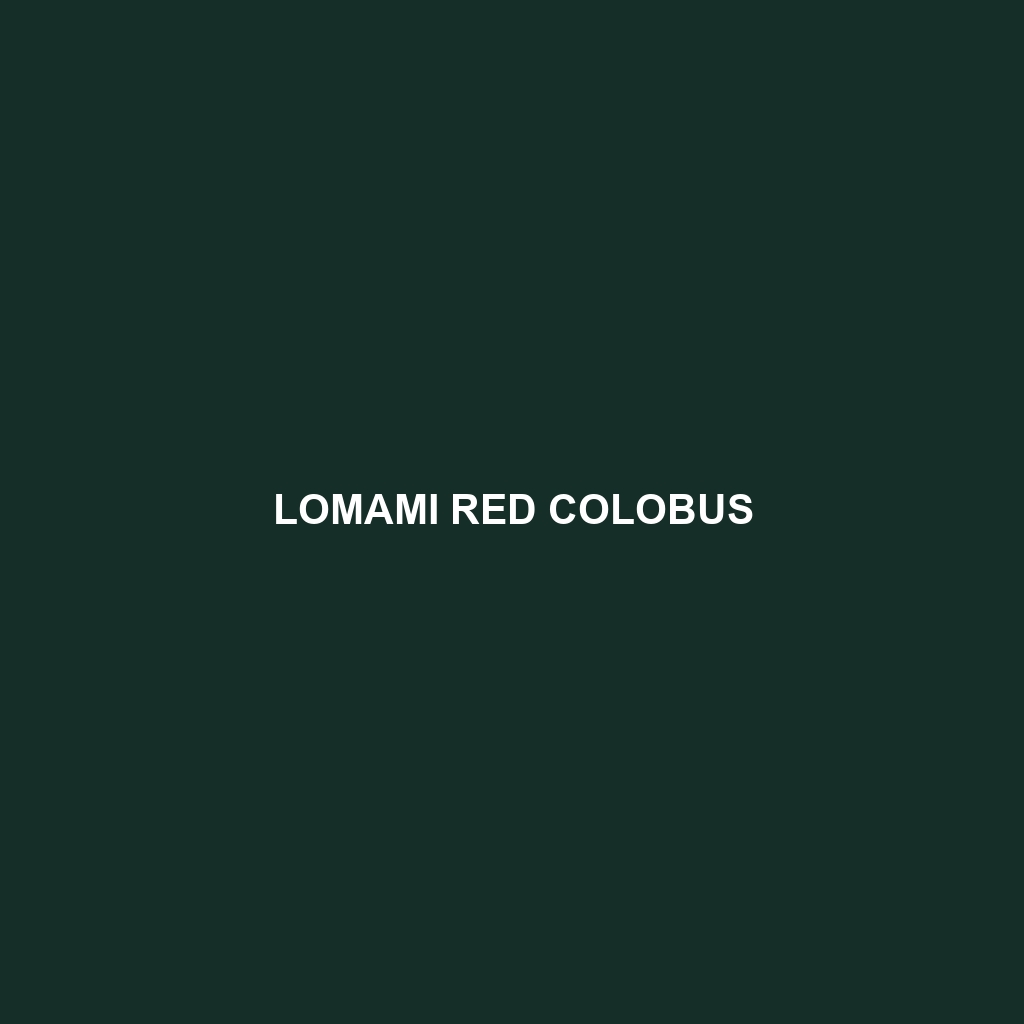Pennant’s Red Colobus: An Intriguing Primate of Central Africa
Pennant’s Red Colobus (Piliocolobus pennantii) is a fascinating species of primate that inhabits the dense forests of Central Africa. Known for their striking coloration and complex social behaviors, these monkeys play a crucial role in their ecosystems. Despite their ecological importance, Pennant’s Red Colobus faces numerous threats, making their conservation a priority.
Physical Characteristics
Size: Pennant’s Red Colobus monkeys are medium-sized primates. Adults typically weigh between 7 to 10 kg (15 to 22 lbs), with males generally being larger than females. They have a body length of approximately 45 to 70 cm (18 to 28 inches), with their long tails adding an extra 60 to 80 cm (24 to 32 inches).
Coloration: These primates are renowned for their vivid red fur, which covers most of their bodies. Their limbs and tail are usually a darker shade, often appearing almost black. The face is less hairy, with a pinkish to dark complexion around the eyes and mouth, giving them a distinctive, expressive appearance.
Special Features: Pennant’s Red Colobus features a unique lack of thumbs, which is a common trait among colobus monkeys. This adaptation aids in their arboreal lifestyle, allowing for more efficient brachiation (swinging from tree limb to tree limb).
Behaviors
Social Interactions: Pennant’s Red Colobus monkeys are highly social animals, living in large, matriarchal groups that can range from 20 to over 80 individuals. These groups have complex social structures and communication systems, utilizing a variety of vocalizations, body postures, and facial expressions to convey information.
Feeding Habits: As folivores, their diet mainly consists of leaves, although they also consume flowers, fruits, and seeds. Their specialized stomachs are adapted to digest large quantities of fibrous plant material, which many other animals cannot process efficiently.
Ecological Roles: These monkeys play a vital role in their habitats by aiding in seed dispersal and contributing to the pruning of foliage, which can promote forest regeneration. Their foraging habits also influence the structure and health of their ecosystems.
Habitats and Adaptations
Habitats: Pennant’s Red Colobus is primarily found in the lowland tropical rainforests of Central Africa, specifically in regions of the Congo Basin. They prefer areas with dense canopy cover, which provides safety from predators and abundant food sources.
Adaptations: Adapted for an arboreal lifestyle, Pennant’s Red Colobus monkeys have strong, elongated limbs and prehensile tails that enhance their ability to navigate the treetops. Their digestive system, with its multi-chambered stomach, is specialized for breaking down the cellulose in leaves.
Conservation Status
Threats: The primary threats to Pennant’s Red Colobus are habitat loss due to deforestation, hunting, and human encroachment. As forests are cleared for agriculture or logging, these monkeys lose their homes and food sources, leading to population declines.
Conservation Efforts: Various conservation programs are underway to protect Pennant’s Red Colobus, focusing on habitat preservation, anti-poaching measures, and raising awareness about the species’ plight. Protected areas and national parks are critical to their survival.
Fascinating Fun Facts
Communication: Pennant’s Red Colobus monkeys use a diverse array of vocalizations, including grunts, roars, and chirps, to communicate with group members and warn of potential threats.
Tool Use: While not as famous for tool use as some other primates, these monkeys have been observed using sticks and other objects to aid in foraging or social interactions.
Slow Metabolism: Their slow metabolic rate is an adaptation to their folivorous diet, allowing them to extract the maximum amount of nutrients from their fibrous food.
Pennant’s Red Colobus is a prime example of the intricate balance within tropical ecosystems and the urgent need for conservation efforts to preserve such unique and vital species.
